A Quetico Solo, August 2008
by UncleMoose
Day 13 - Robinson Lake (Friday, August 15) [full index]
(no mileage, no portages)
In the morning I got a better look around my new island home. This island was much larger than the previous islands I had used for camps, but not too large to fully explore and get to know in just a couple of hours. Roughly two-thirds of the island had a wide open understory dominated by beautiful stands of red pine. Carpeting the ground beneath these pines was a soft duff that provided a fertile environment for beautiful and unusual mushrooms, fungi and moss. The other third of the island was more overgrown and contained some larger spruce and white pines. The highlight of the island's flora, however, was the large strip of wild blueberries that covered the south side of the island.


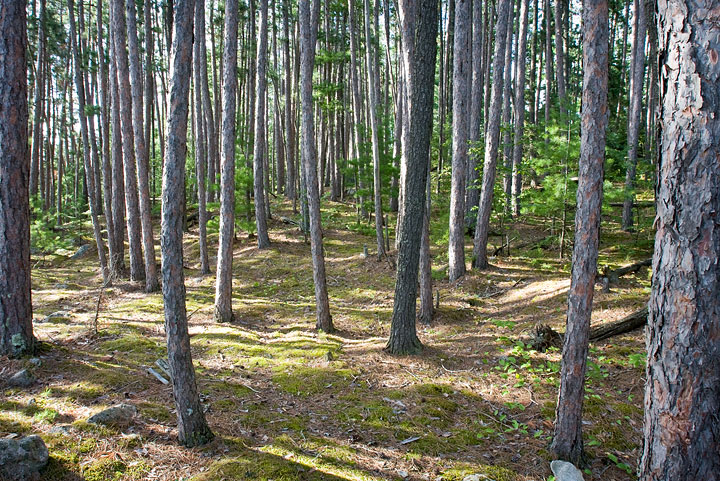




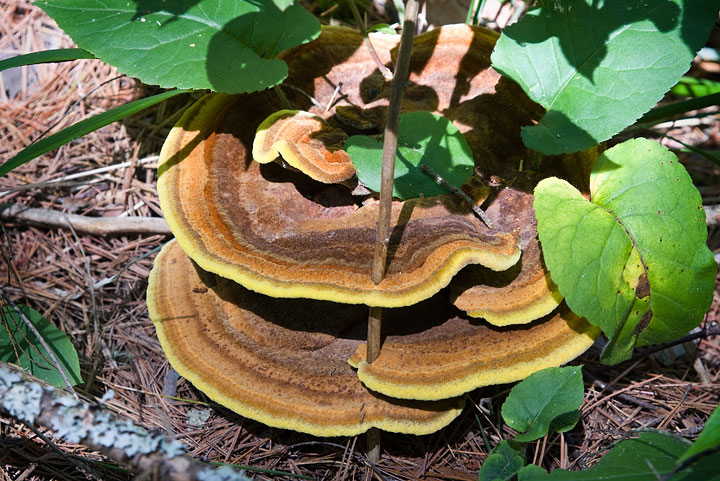
There were actually two established campsites on the island, the primary northeast site where I was staying and a smaller, lesser used site on the opposite southwest side. The main site had a large, flat granite "front porch" that served as a great canoe landing and sun deck. The camp sitting area was directly behind the porch and surrounded a very large fireplace that had likely taken generations to build. Extending from the sitting area all the way to the north shoreline was a wide open stand of red pine and cedar that provided ample space for tents. At the north shoreline was a rare and very welcome sand beach that extended a ways out into the shallow water before dropping off. Even the bugs seemed to be less in numbers here. This was definitely a wilderness campsite paradise worthy of five stars in my book.
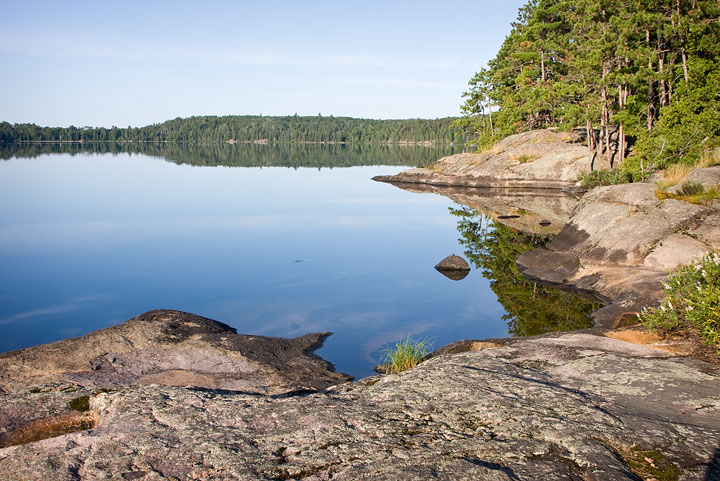
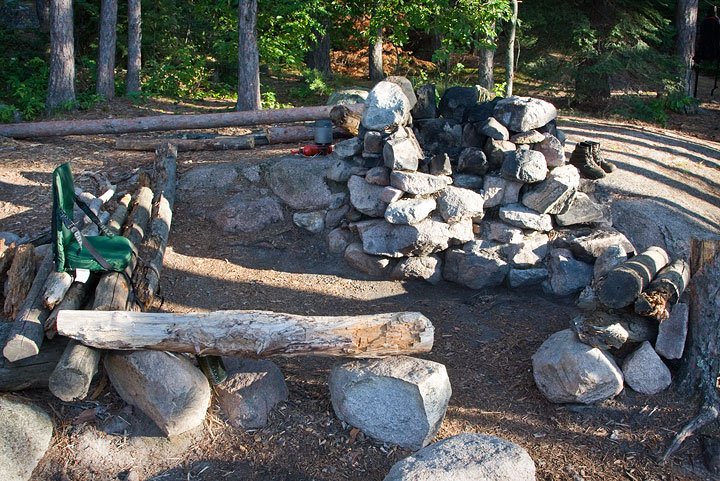
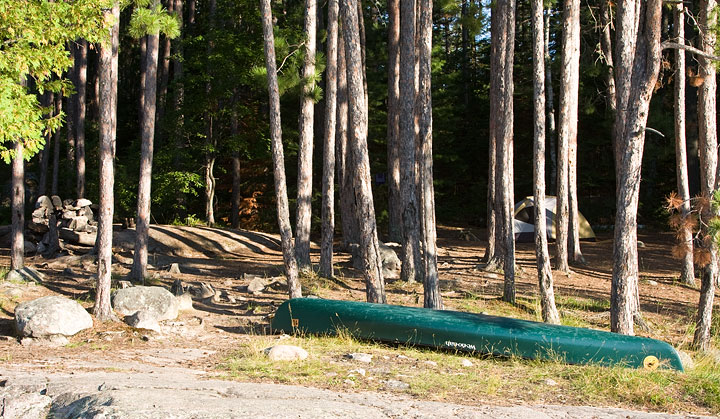




The island also had its population of animals. Little pine squirrels scurried about, occasionally stopping to check out what I was doing and to see if I had any food handouts. Birds were singing away all around, and during breakfast I had a hummingbird zip in and hover just a foot away from my face. I was a little concerned he might mistake one of my eyes for a flower, but fortunately he only darted off again, disappearing just as fast as he had appeared. On the far side of the island I found a garter snake slithering about, and I remarked to myself what a varied little group of creatures this small island habitat supported.


The real star of the island's animal kingdom, however, was an immature bald eagle who lived in its nest, high atop a tall white pine behind camp. "Junior", as I called him, kept the lake fully entertained with his near constant squeaking, dramatic low altitude takeoffs and landings, and high speed chases across the lake. Rather than being the pursuer during these high speed chases, Junior was instead the pursued, often being chased around the lake by a one or two small birds that would repeatedly dive- bomb him like fighter jets targeting a jumbo airliner. During these chases Junior would squeak his head off, much like a yelping little puppy being chased by a big dog. Most of the time, though, when not being tormented by other birds, Junior would just sit in his nest and squeak away until Mom or Dad returned with something to eat. I always knew when one of the adult eagles was nearby, because Junior's slow, persistent squeaks would suddenly become frantic. It was all quite comic, except when I was trying to rest.


After my morning of island exploration and discovery, I decided to take a hike to the top of Gardners Mountain just east across the lake from camp. My original reason, in fact, for having added Robinson Lake to the itinerary had specifically been to visit Gardners Mountain. Inspired by the essay "Silence" in Sigurd F. Olson's book "The Singing Wilderness", I was interested to see if I could find one particular spot that the author had written about. Additionally, while doing some pre-trip research on the subject I had found a sixty year old photograph of Sigurd Olson supposedly standing at this particular spot. With my interest in photography, I decided to make it a quest to find and photograph this place and to see if I could reproduce the same angle and field of view as the original photograph.
There is no trail up Gardners Mountain (or Robinson Peak as it was called in Sigurd Olson's day). To most people it's just another fixture of the landscape to admire as they paddle by. The way up was steep and blocked by rock cliffs, but the underbrush along the way was easy to push through. It took some weaving back and forth between the cliffs to finally get to the top, but the overall hike was not long. Once at the top, however, I was surprised to find it mostly treed-in with very few outward views of the surrounding area. I did manage to find an old survey marker fastened to a boulder, but nothing really looked like to the spot I sought. I started to hike back down in a slightly different direction and soon discovered a few rock ledges just below the summit that did provide some views. One of these in particular looked promising, but I had forgotten the reference photo back at camp, and I couldn't be sure this was the right place. It was just as well, though, since the lighting conditions were poor and it was already getting late. I decided to hike back down and hopefully return the next morning.





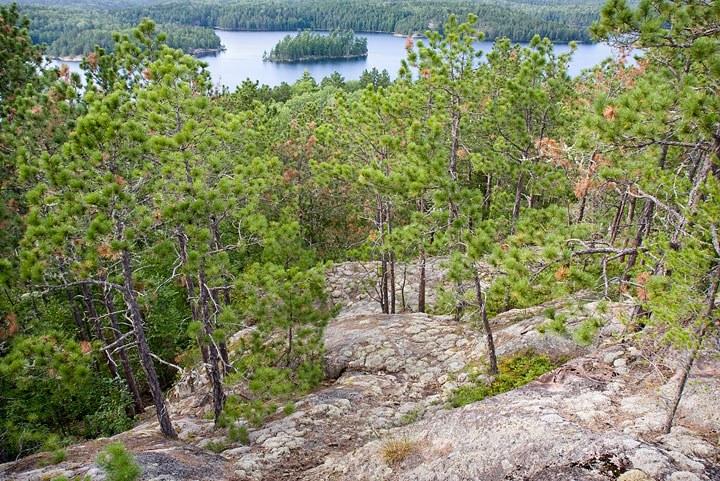
Video (click on an image below to play)
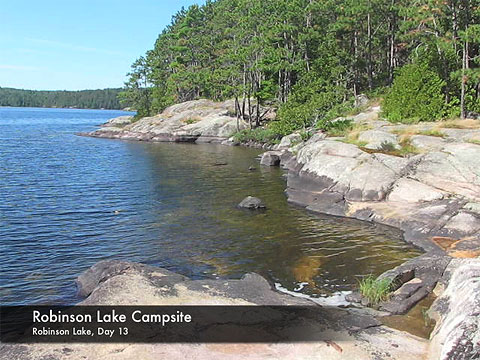
Click here for the fully formatted report

 Donate - BWCA.com
Donate - BWCA.com